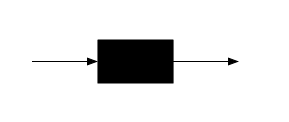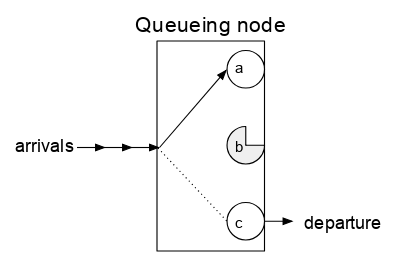|
Norton's Theorem
In direct-current circuit theory, Norton's theorem, also called the Mayer–Norton theorem, is a simplification that can be applied to networks made of linear time-invariant resistances, voltage sources, and current sources. At a pair of terminals of the network, it can be replaced by a current source and a single resistor in parallel. For alternating current (AC) systems the theorem can be applied to reactive impedances as well as resistances. The Norton equivalent circuit is used to represent any network of linear sources and impedances at a given frequency. Norton's theorem and its dual, Thévenin's theorem, are widely used for circuit analysis simplification and to study circuit's initial-condition and steady-state response. Norton's theorem was independently derived in 1926 by Siemens & Halske researcher Hans Ferdinand Mayer (1895–1980) and Bell Labs engineer Edward Lawry Norton (1898–1983). To find the equivalent, the Norton current ''I''no is calculated as th ... [...More Info...] [...Related Items...] OR: [Wikipedia] [Google] [Baidu] |
Hans Ferdinand Mayer
Hans Ferdinand Mayer (born 23 October 1895 in Pforzheim, Germany; died 18 October 1980 in Munich, West Germany) was a German mathematician and physicist. He was the author of the "Oslo Report", a major military intelligence leak which revealed German technological secrets to the British Government shortly after the start of World War II. Biography Hailing from a modest background, Mayer volunteered for service in WWI where he was severely wounded on his 19th birthday. He subsequently studied mathematics, physics and astronomy at the University of Karlsruhe and the University of Heidelberg. In 1920, he attained a doctorate "on the behaviour of molecules in relation to free slow electrons". His professor was Nobel Prize winner Philipp Lenard. In 1922 he joined the Berlin laboratory of Siemens & Halske AG. From 1926 he co-operated with Karl Küpfmüller. Both scientists concerned themselves with interference-free information transfer in long distance circuits, important in develo ... [...More Info...] [...Related Items...] OR: [Wikipedia] [Google] [Baidu] |
Processor Sharing
Processor sharing or egalitarian processor sharing is a service policy where the customers, clients or jobs are all served simultaneously, each receiving an equal fraction of the service capacity available. In such a system all jobs start service immediately (there is no queueing). The processor sharing algorithm "emerged as an idealisation of round-robin scheduling algorithms in time-shared computer systems". Queueing theory A single server queue operating subject to Poisson arrivals (such as an M/M/1 queue or M/G/1 queue) with a processor sharing discipline has a geometric stationary distribution. The sojourn time jobs experience has no closed form solution, even in an M/M/1 queue. Generalized processor sharing Generalized processor sharing is a multi-class adaptation of the policy which shares service capacity according to positive weight factors to all non-empty job classes at the node, irrespective of the number of jobs of each class present. Often it is assumed that ... [...More Info...] [...Related Items...] OR: [Wikipedia] [Google] [Baidu] |
FCFS
Queueing theory is the mathematical study of waiting lines, or queues. A queueing model is constructed so that queue lengths and waiting time can be predicted. Queueing theory is generally considered a branch of operations research because the results are often used when making business decisions about the resources needed to provide a service. Queueing theory has its origins in research by Agner Krarup Erlang when he created models to describe the system of Copenhagen Telephone Exchange company, a Danish company. The ideas have since seen applications including telecommunication, traffic engineering, computing and, particularly in industrial engineering, in the design of factories, shops, offices and hospitals, as well as in project management. Spelling The spelling "queueing" over "queuing" is typically encountered in the academic research field. In fact, one of the flagship journals of the field is ''Queueing Systems''. Single queueing nodes A queue, or queueing node ... [...More Info...] [...Related Items...] OR: [Wikipedia] [Google] [Baidu] |
Reversible Queueing System
Queueing theory is the mathematical study of waiting lines, or queues. A queueing model is constructed so that queue lengths and waiting time can be predicted. Queueing theory is generally considered a branch of operations research because the results are often used when making business decisions about the resources needed to provide a service. Queueing theory has its origins in research by Agner Krarup Erlang when he created models to describe the system of Copenhagen Telephone Exchange company, a Danish company. The ideas have since seen applications including telecommunication, traffic engineering, computing and, particularly in industrial engineering, in the design of factories, shops, offices and hospitals, as well as in project management. Spelling The spelling "queueing" over "queuing" is typically encountered in the academic research field. In fact, one of the flagship journals of the field is ''Queueing Systems''. Single queueing nodes A queue, or queueing node ... [...More Info...] [...Related Items...] OR: [Wikipedia] [Google] [Baidu] |
Flow-equivalent Server Method
In queueing theory, a discipline within the mathematical theory of probability, the flow-equivalent server method (also known as flow-equivalent aggregation technique, Norton's theorem for queueing networks or the Chandy–Herzog–Woo method) is a divide-and-conquer method to solve product form queueing networks inspired by Norton's theorem for electrical circuits. The network is successively split into two, one portion is reconfigured to a closed network and evaluated. Marie's algorithm is a similar method where analysis of the sub-network are performed with state-dependent Poisson process In probability, statistics and related fields, a Poisson point process is a type of random mathematical object that consists of points randomly located on a mathematical space with the essential feature that the points occur independently of one ... arrivals. References Queueing theory {{Probability-stub ... [...More Info...] [...Related Items...] OR: [Wikipedia] [Google] [Baidu] |
Queuing Theory
Queueing theory is the mathematical study of waiting lines, or queues. A queueing model is constructed so that queue lengths and waiting time can be predicted. Queueing theory is generally considered a branch of operations research because the results are often used when making business decisions about the resources needed to provide a service. Queueing theory has its origins in research by Agner Krarup Erlang when he created models to describe the system of Copenhagen Telephone Exchange company, a Danish company. The ideas have since seen applications including telecommunication, traffic engineering, computing and, particularly in industrial engineering, in the design of factories, shops, offices and hospitals, as well as in project management. Spelling The spelling "queueing" over "queuing" is typically encountered in the academic research field. In fact, one of the flagship journals of the field is ''Queueing Systems''. Single queueing nodes A queue, or queueing node ... [...More Info...] [...Related Items...] OR: [Wikipedia] [Google] [Baidu] |
Thévenin Theorem
Thévenin is a surname. Notable people with the surname include: *Charles Thévenin (1764–1838), neoclassical French painter * Denis Thévenin, birth name of French author Georges Duhamel *Léon Charles Thévenin (1857–1926), French engineer *Nicolas Thévenin Nicolas Thevenin (born 5 June 1958) is a French prelate of the Catholic Church who works in the diplomatic service of the Holy See. He has been Apostolic Nuncio to Egypt since 2019. Biography Nicolas Henry Marie Denis Thevenin was born on 5 ... (born 1958), bishop and Vatican diplomat * Olivier Thévenin (born 1968), French racing driver {{surname, Thévenin ... [...More Info...] [...Related Items...] OR: [Wikipedia] [Google] [Baidu] |
Current Divider Rule
In electronics, a current divider is a simple linear circuit that produces an output current (''I''X) that is a fraction of its input current (''I''T). Current division refers to the splitting of current between the branches of the divider. The currents in the various branches of such a circuit will always divide in such a way as to minimize the total energy expended. The formula describing a current divider is similar in form to that for the voltage divider. However, the ratio describing current division places the impedance of the considered branches in the denominator, unlike voltage division where the considered impedance is in the numerator. This is because in current dividers, total energy expended is minimized, resulting in currents that go through paths of least impedance, hence the inverse relationship with impedance. Comparatively, voltage divider is used to satisfy Kirchhoff's Voltage Law (KVL). The voltage around a loop must sum up to zero, so the voltage drops must ... [...More Info...] [...Related Items...] OR: [Wikipedia] [Google] [Baidu] |
Parallel (operator)
The parallel operator (also known as reduced sum, parallel sum or parallel addition) \, (pronounced "parallel", following the parallel (geometry)#Symbol, parallel lines notation from geometry) is a function (mathematics), mathematical function which is used as a shorthand in electrical engineering, but is also used in kinetics (physics), kinetics, fluid mechanics and financial mathematics. The name ''parallel'' comes from the use of the operator computing the combined resistance of Resistor#Series and parallel resistors, resistors in parallel. Overview The parallel operator represents the multiplicative inverse, reciprocal value of a sum of reciprocal values (sometimes also referred to as the "reciprocal formula" or "harmonic series (mathematics), harmonic sum") and is defined by: :\begin \parallel: &&\overline \times \overline &\to \overline \\ &&(a, b) &\mapsto a \parallel b = \frac = \frac, \end with \overline = \mathbb\cup\ being the ... [...More Info...] [...Related Items...] OR: [Wikipedia] [Google] [Baidu] |



